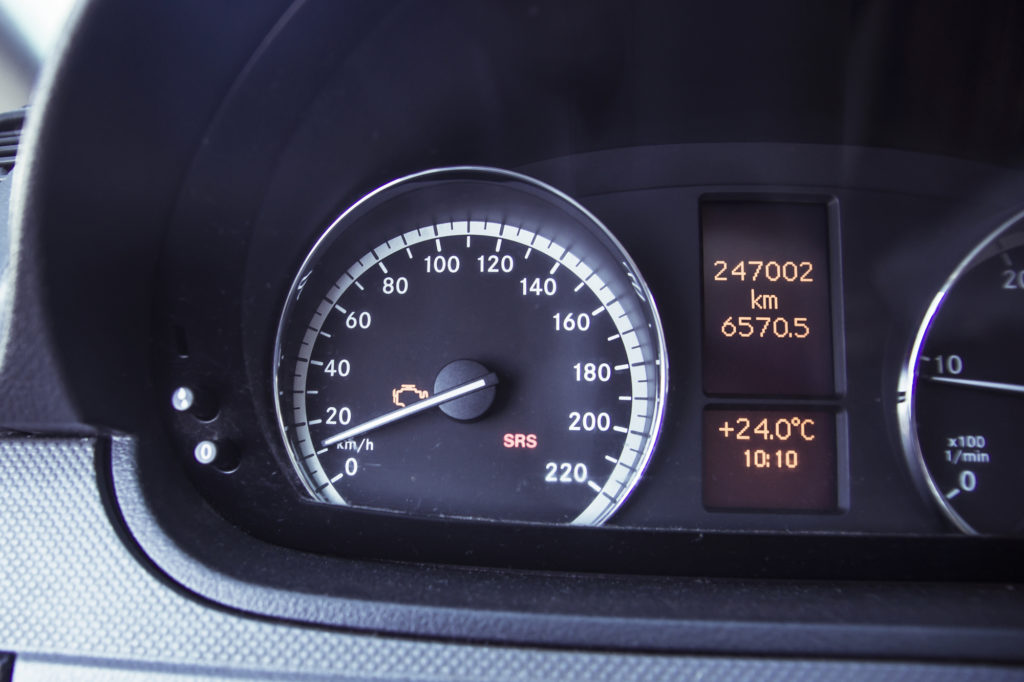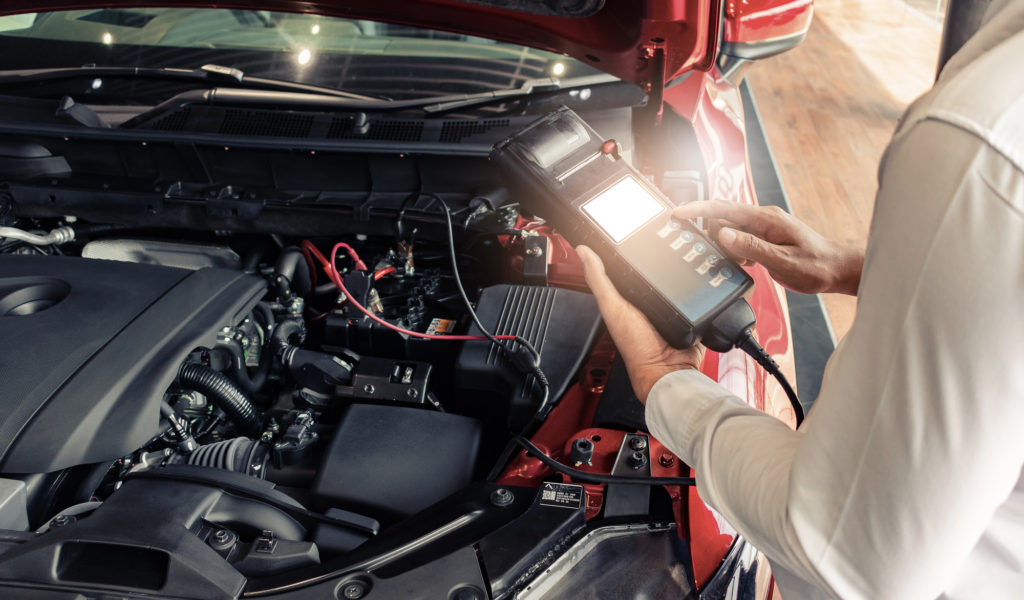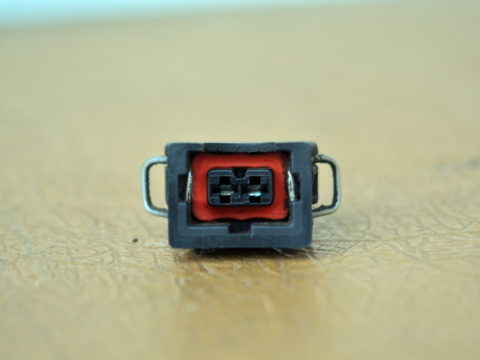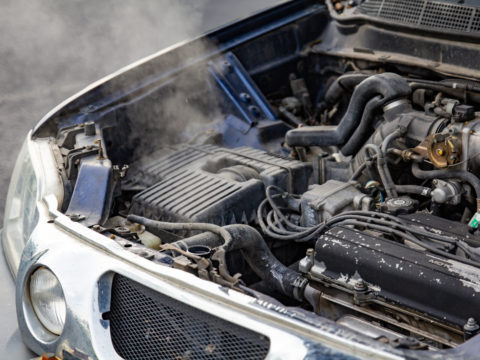Every driver dreads the check engine light that pops up on the dashboard. The light indicates your car has a problem. To understand the root of the problem, you must read and interpret the OBD-II trouble code.
Since there are different types of OBD-II codes, we’ll cover the diagnostic trouble code P0110. Read on to understand what the P0110 code means, its causes, symptoms, and how to fix it.

Contents
What Is P0110 Code?
Diagnostic Trouble Code (DTC) P0110 indicates a problem with the Intake Air Temperature (IAT) sensor circuit. The IAT sensor circuit sends incorrect signals to the vehicle’s Engine Control Module (ECM).
P0110 trouble code appears when the ECM perceives that the signal coming from the IAT sensor circuit fails to match your vehicle’s factory specifications.
The IAT sensor is handy in determining your engine’s oxygen density variances. Typically, cooler air has a higher oxygen density than warmer air.
If there are discrepancies in the intake air temperature, it will affect air combustion in the combustion chambers.
Thankfully, the ECM adapts to any changes in air temperature and modifies to manage fuel efficiently.
In the case of trouble code P0110, the ECM cannot receive reliable data from the IAT sensor. As a result, ECM fails to adapt to changes in air temperature, affecting the engine’s efficiency.
Correct data from the sensor is significant as it helps the ECM control fuel management. The ECM won’t manage fuel efficiently with incorrect data from the IAT sensor.
Where Is the Intake Air Temperature Sensor Located?
The location of the intake air temperature sensor varies depending on the vehicle’s design. To locate the IAT sensor in your car, refer to the manufacturer’s service manual.
Below are three different locations you are likely to find the IAT sensor.
As a Stand-alone IAT Sensor
The sensor is located in the air duct between the throttle box and the air filter housing. You might also find it attached to the intake manifold or the air cleaner.
Integrated Into MAF Sensor
If the car engine has a Mass Air Flow (MAF) Sensor, the IAT sensor might be integrated into it. The MAF Sensor is located under the plenum, between the intake manifold and the air filter.
A mass air flow sensor uses three wires to function. The two additional wires are for the IAT sensor if it has four or five wires.
Integrated Into MAP Sensor
The MAP (Manifold Absolute Pressure) sensor might have an integrated IAT sensor. The MAP sensor is either on the throttle body or the intake manifold.
For a MAP sensor to function, it requires three wires. If the MAP sensor has a fourth wire, it indicates the presence of the IAT sensor.
What Causes P0110 Code?
The trouble code P0110 might result from different underlying conditions. Below are several causes of the P0110 trouble code.
Faulty IAT Sensor
If your vehicle’s IAT sensor is faulty, it will send the wrong signals to the ECM. The malfunctioning IAT sensor tells the ECM that the air temperature in the intake is different even if it’s not.
This results in improper fuel mixture and the occurrence of the P0110 code.
Circuit Issues
The IAT sensor wirings might be broken or shorted. When the insulation of the wires peels off, they might touch each other, short-circuit and lead to the diagnostic trouble code P0110.
Faulty Engine
This issue arises if the engine has poor fuel pump pressure or other internal problems. Such an engine prevents the IAT sensor from sending correct data to the ECM. The error code P0110 might also appear if your ECM is faulty.
Damaged IAT Connector Plug
The diagnostic trouble code might appear if the IAT connector plug is damaged or corroded. A bad or corroded connector plug prevents current flow from the IAT sensor to the ECM.
Bad MAF Sensor
The MAF sensor measures the amount of air that enters your car’s engine. It then sends this information to the ECM for proper fuel management.
A faulty MAF sensor sends the wrong information to the ECM, failing to manage fuel effectively. This fault leads to the P0110 trouble code.

P0110 Code Symptoms
Several symptoms accompany the diagnostic trouble code p0110. Some of the common symptoms are:
Illuminated Check Engine Light
This is the most common symptom you’ll notice if your car has a problem. In the case of a P0110 trouble code, the check engine light will pop up, indicating that it needs a thorough checkup.
Starting Issues
The vehicle might sound like it’s not receiving enough fuel when starting. You may also notice that the battery is usually weak when starting.
Backfiring
If the car is backfiring, it might result from the wrong synchronization of the Throttle Position Sensor and the IAT Sensor.
Increased Fuel Consumption
If the IAT sensor is faulty, it might send the wrong data to the ECM and will fail to manage fuel consumption. That might cause the engine to consume a lot more fuel than usual.
Poor Engine Performance
You might notice that the engine performs poorly or experiences a frequent power loss, especially when attempting to overtake or drive up steep hills.
How To Fix P0110 Code
Before you start fixing the P0110 code, remember that other diagnostic trouble codes might share similar symptoms with the P0110 code. Refer to your car’s repair manual to discover the best way to fix the error code.
What if you’ve no idea how to fix the P0110 code? Seek the help of a professional who will diagnose and fix the error code. However, if you want to fix it, you should have the recommended tools for diagnosis and repair.
Tools and Equipment Needed
Below are must-have tools to fix the P0110 code.
- OBD-II scanner
- Auto repair manual
- Digital multimeter
- Basic hand tools
- Electrical contact cleaner
This is how to fix the diagnostic trouble code P0110.
Reset the Trouble Code
Use the OBD-II scanner to reset the P0110 trouble code. After resetting, do a test drive and check if the trouble code reoccurs. If the code comes back and the engine light illuminates, delve deeper to fix the problem.
Inspect the IAT Sensor Wiring
The IAT sensor wiring might lead to circuit issues if broken or peeled off. Inspect the wiring visually and use a digital multimeter to check for any shorts.
Fix the wiring to avoid short-circuiting. You can also inspect the IAT connector plug to see if it’s damaged or corroded. Use an electrical contact cleaner to clean any corrosion.
Check for Proper Voltage
Use the vehicle’s auto repair manual to see if the voltage for the IAT sensor is within the manufacturer’s specification. If it’s not within the specification, clear the error code, unplug and reconnect the IAT sensor. Run a test drive to see if the code will reappear.
Replace the IAT Sensor
If the above repairs fail to work, the intake air temperature sensor might be faulty. The best way to fix such a problem is by replacing the IAT sensor. Use basic hand tools to remove and replace it with a new one.
Replace the Engine Control Module
If everything else fails, your ECM might be faulty. Replace it and ensure the sensor and wirings are correctly fixed.
Can You Clean an Intake Air Temperature Sensor?
You can clean an intake air temperature sensor. To clean the IAT sensor, disconnect the battery and remove the sensor from the intake manifolds. Next, spray some electrical contact cleaner onto a clean paper towel. Then, use the paper towel to wipe out all the dirt from your IAT connections.
How Much Does It Cost To Replace an IAT Sensor?
The average cost of replacing an IAT sensor ranges between $40 and $100, depending on car model and location. The labor cost also varies, but on average, it ranges between $30 and $45.














